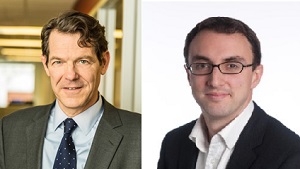Meet James and Gil: Investment Bankers With Corporate Heads and Social Hearts by Linda Ryan
With the launch of the Building Banking on Values, a new VoiceAmerica radio series I’m...
Read Moreby VoiceAmerica | Apr 26, 2016 | Business | 0 |
With the launch of the Building Banking on Values, a new VoiceAmerica radio series I’m...
Read Moreby VoiceAmerica | Feb 28, 2014 | Business | 0 |
Venezuelaâs rising wave of anti-government protests & the bloody government response has...
Read Moreby VoiceAmerica | Jul 24, 2013 | Business | 0 |
But getting back to the U.S. Treasuries and why Bernanke may be losing control of that market and...
Read More



